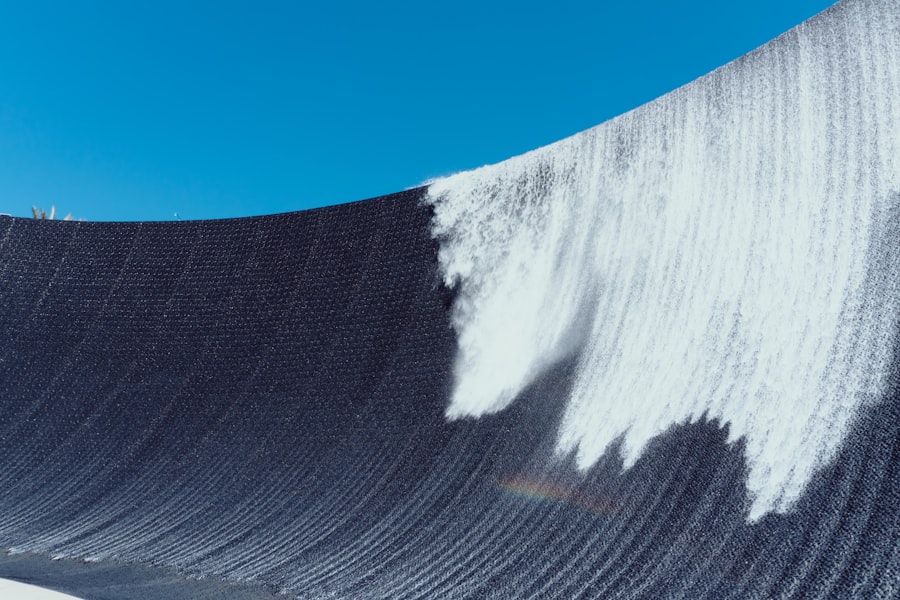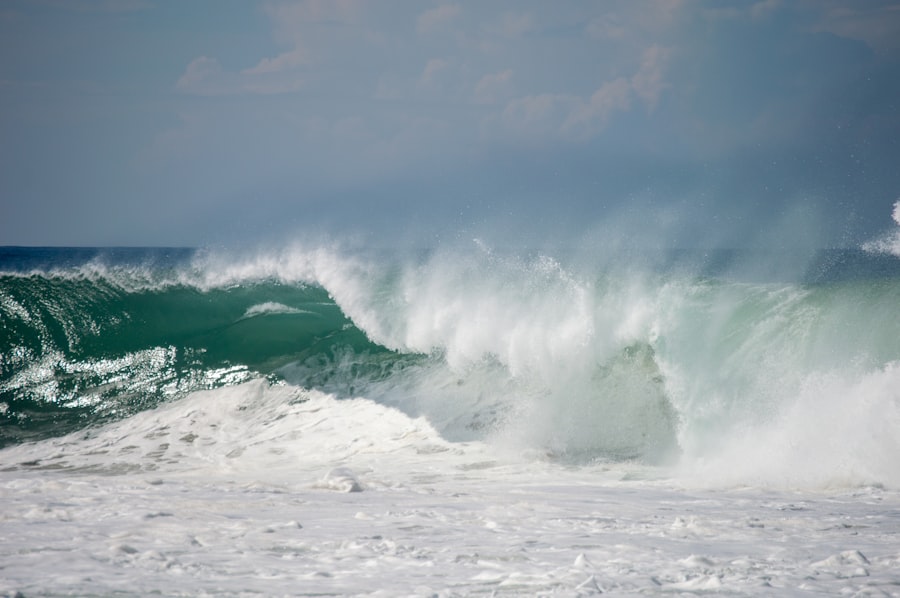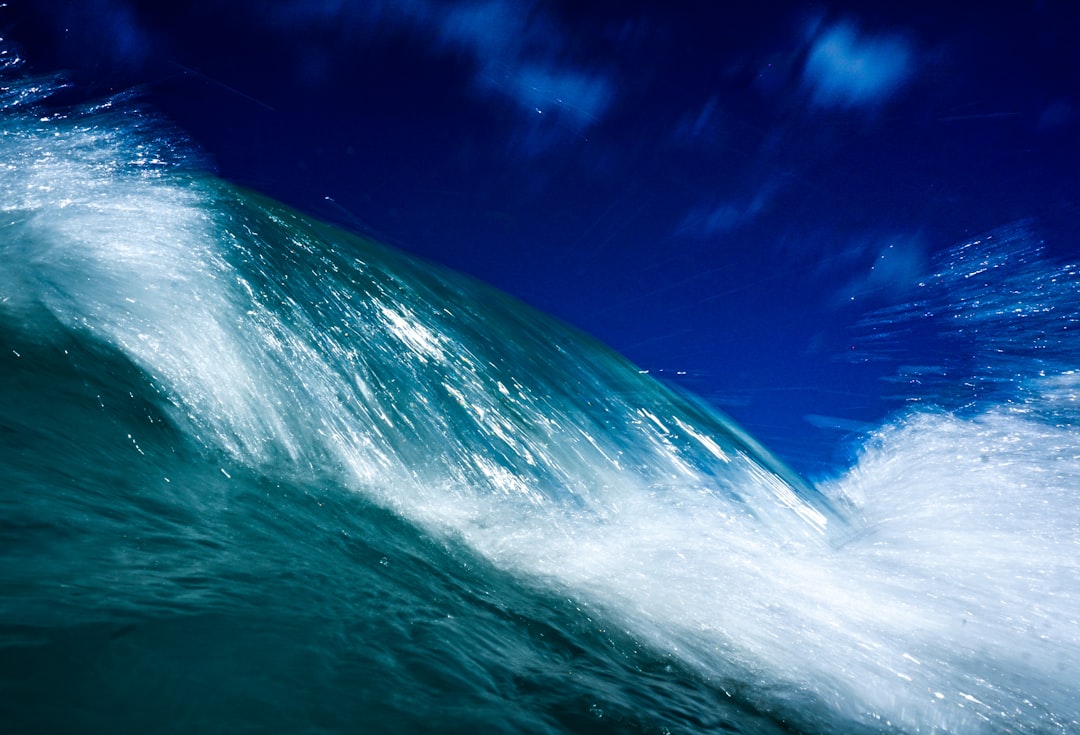The Drake Passage, a body of water located between the southern tip of South America and Antarctica, is renowned for its tumultuous seas and unpredictable weather patterns. This narrow stretch of ocean, measuring approximately 800 kilometers (500 miles) wide, serves as a critical maritime route for vessels traveling to and from the Antarctic region. Named after the English explorer Sir Francis Drake, who navigated these waters in the late 16th century, the passage has become synonymous with both adventure and peril.
Its unique geographical position allows for the confluence of various ocean currents, which contributes to its notorious reputation among sailors and researchers alike. Navigating the Drake Passage is not merely a test of skill; it is also a challenge that requires a deep understanding of the ocean’s dynamics. The passage is characterized by its strong winds, high waves, and rapidly changing weather conditions, making it one of the most treacherous maritime routes in the world.
For those who dare to traverse these waters, knowledge of the passage’s characteristics is essential. The Drake Passage serves as a gateway to the Southern Ocean, and its significance extends beyond navigation; it plays a vital role in global climate patterns and marine biodiversity.
Key Takeaways
- The Drake Passage is a treacherous body of water located between South America’s Cape Horn and the South Shetland Islands of Antarctica.
- The Southern Ocean’s unique wave patterns are influenced by strong westerly winds and the absence of continental barriers, resulting in large, powerful waves.
- Accurate wave forecasting is crucial for safe navigation through the Drake Passage, as unpredictable wave conditions can pose significant risks to maritime operations.
- Advanced tools and technology such as satellite data, wave buoys, and numerical models are used for wave forecasting in the Southern Ocean, providing valuable information for sailors and ship captains.
- Navigating the Drake Passage presents challenges such as extreme weather, icebergs, and strong currents, requiring careful planning and adherence to safety protocols.
Understanding the Southern Ocean’s unique wave patterns
The Southern Ocean is distinct from other oceans due to its unique wave patterns, which are influenced by a combination of factors including wind speed, ocean currents, and the geography of the seabed. The interaction between the Antarctic Circumpolar Current and prevailing westerly winds creates a dynamic environment where waves can reach extraordinary heights. These waves are not only larger but also more powerful than those found in other oceans, making them a significant consideration for any vessel attempting to navigate the Drake Passage.
The wave patterns in the Southern Ocean are further complicated by the presence of icebergs and sea ice, which can alter wave behavior and create hazardous conditions for ships. As waves approach the continental shelf near South America, they can become steep and chaotic, leading to dangerous situations for mariners. Understanding these unique wave patterns is crucial for effective navigation, as they can change rapidly and unexpectedly.
Mariners must be equipped with knowledge about these conditions to make informed decisions while traversing this challenging maritime landscape.
Importance of accurate wave forecasting for navigating the Drake Passage

Accurate wave forecasting is paramount for safe navigation through the Drake Passage. Given the unpredictable nature of the Southern Ocean’s weather and wave conditions, having reliable forecasts can mean the difference between a successful crossing and a perilous encounter with nature’s fury. Mariners rely on advanced forecasting models that take into account various meteorological factors to predict wave heights, periods, and directions.
This information is essential for planning safe routes and avoiding potentially dangerous situations. Moreover, accurate wave forecasting contributes to overall maritime safety by enabling vessels to make timely decisions regarding their speed and course. For instance, if forecasts indicate an impending storm with high waves, captains can adjust their routes or delay their departure to avoid treacherous conditions.
This proactive approach not only enhances safety but also minimizes the risk of damage to vessels and cargo. In an environment as volatile as the Drake Passage, where conditions can change within hours, having access to precise wave forecasts is indispensable for any maritime operation.
Tools and technology used for wave forecasting in the Southern Ocean
| Tool/Technology | Description |
|---|---|
| Satellite Altimetry | Uses satellite data to measure sea surface height, which can be used to estimate wave heights and patterns. |
| Wave Buoy | Deployed in the ocean to directly measure wave characteristics such as height, period, and direction. |
| Numerical Wave Models | Computer models that simulate wave behavior based on atmospheric and oceanic conditions. |
| Radar Systems | Uses radar technology to measure wave characteristics and patterns in the ocean. |
| Wave Gliders | Autonomous vehicles that can collect data on wave conditions while navigating the ocean surface. |
The advancement of technology has significantly improved wave forecasting capabilities in the Southern Ocean. Various tools and methodologies are employed to gather data on wave conditions, including satellite observations, buoys, and numerical weather prediction models. Satellites equipped with radar and imaging technology provide real-time data on wave heights and surface conditions across vast areas of ocean.
This information is crucial for creating accurate forecasts that mariners can rely on. In addition to satellite data, ocean buoys play a vital role in monitoring wave conditions. These floating devices are strategically placed throughout the Southern Ocean to collect data on wave height, frequency, and direction.
The information gathered by buoys complements satellite data and enhances the accuracy of forecasting models. Furthermore, numerical weather prediction models utilize complex algorithms to simulate atmospheric conditions and predict future wave patterns based on current data.
Challenges of navigating the Drake Passage
Navigating the Drake Passage presents numerous challenges that test even the most experienced mariners. The combination of strong winds, high waves, and rapidly changing weather conditions creates an environment where danger lurks at every turn. One of the primary challenges is the unpredictability of weather patterns; storms can develop suddenly, leading to treacherous seas that can overwhelm vessels.
This unpredictability necessitates constant vigilance and adaptability from crews as they traverse these waters. Another significant challenge is the presence of icebergs and sea ice in the region. As vessels approach Antarctica, they must remain alert for drifting ice that can pose serious threats to navigation.
Collisions with icebergs can result in catastrophic damage or even sinking, making it imperative for mariners to have up-to-date information on ice conditions. The combination of these challenges makes navigating the Drake Passage a formidable task that requires skill, experience, and thorough preparation.
Safety measures for crossing the Drake Passage

To ensure safe passage through the Drake Passage, mariners must implement a range of safety measures before and during their journey. One of the most critical steps is thorough planning based on accurate weather forecasts and wave predictions. Captains should assess current conditions and potential changes throughout their voyage to make informed decisions about their route and speed.
Additionally, vessels should be equipped with safety gear such as life rafts, emergency beacons, and communication devices to enhance crew safety in case of emergencies. Training and preparedness are also essential components of safety measures in this challenging environment. Crews should undergo rigorous training that includes emergency response drills and familiarization with navigation equipment specific to rough seas.
Regular maintenance checks on vessels are crucial to ensure that all systems are functioning optimally before embarking on a journey through the Drake Passage. By prioritizing safety measures and fostering a culture of preparedness, mariners can significantly reduce risks associated with navigating this treacherous stretch of ocean.
Impact of weather and wave conditions on maritime operations in the Southern Ocean
Weather and wave conditions have a profound impact on maritime operations in the Southern Ocean. The region’s notorious storms can disrupt shipping schedules, delay research missions, and pose risks to crew safety. For commercial shipping companies, unpredictable weather patterns can lead to increased operational costs due to rerouting or delays in delivery schedules.
This unpredictability necessitates careful planning and flexibility in operations to accommodate changing conditions. In addition to commercial shipping, research expeditions in the Southern Ocean are also affected by weather and wave conditions. Scientists studying marine ecosystems or climate change must consider these factors when planning their missions.
Rough seas can hinder data collection efforts or even force researchers to abandon their projects altogether. As such, understanding weather patterns and wave behavior is essential not only for safe navigation but also for ensuring that scientific endeavors can proceed without unnecessary interruptions.
Strategies for mitigating the effects of rough seas in the Drake Passage
To mitigate the effects of rough seas while navigating the Drake Passage, mariners employ various strategies aimed at enhancing safety and comfort during their journey. One common approach is adjusting vessel speed based on current wave conditions; reducing speed can help minimize the impact of large waves on a ship’s stability. Additionally, choosing optimal routes that take advantage of favorable currents can help vessels avoid areas with particularly rough seas.
Another effective strategy involves utilizing advanced stabilization technology on vessels designed for rough waters. Stabilizers can reduce rolling motion caused by waves, providing a smoother ride for both crew and passengers. Furthermore, maintaining open lines of communication with other vessels in the area allows crews to share real-time information about changing conditions or potential hazards ahead.
By implementing these strategies, mariners can navigate through challenging waters with greater confidence while prioritizing safety.
Case studies of successful navigation through the Drake Passage
Several case studies highlight successful navigation through the Drake Passage despite its notorious reputation for rough seas. One notable example involves a research vessel conducting climate studies in Antarctic waters during an unusually stormy season. By closely monitoring weather forecasts and adjusting their route accordingly, the crew was able to avoid severe storms while still collecting valuable data on ocean temperatures and currents.
Another case study features a commercial shipping company that regularly traverses the Drake Passage as part of its supply chain operations. By investing in advanced forecasting technology and training its crew extensively on navigating rough seas, this company has successfully maintained its shipping schedule even during challenging weather conditions. These examples demonstrate that with careful planning, effective use of technology, and skilled crews, it is possible to navigate the Drake Passage safely while achieving operational goals.
Future developments in wave forecasting for the Southern Ocean
As technology continues to advance, future developments in wave forecasting for the Southern Ocean hold great promise for improving maritime safety and efficiency. Researchers are exploring new methods for collecting data on ocean conditions using autonomous drones equipped with sensors capable of measuring wave heights and currents in real-time. These innovations could provide more granular data that enhances forecasting accuracy.
Additionally, machine learning algorithms are being developed to analyze vast amounts of historical weather data alongside real-time observations. By identifying patterns in past events, these algorithms could improve predictive models used for wave forecasting in unpredictable environments like the Drake Passage. As these technologies evolve, they have the potential to revolutionize how mariners approach navigation through this challenging stretch of ocean.
Navigating the Drake Passage with confidence
Navigating the Drake Passage remains one of maritime history’s most formidable challenges due to its unpredictable weather patterns and treacherous waves. However, advancements in technology and a deeper understanding of ocean dynamics have empowered mariners with tools necessary for safe passage through these waters. Accurate wave forecasting plays a crucial role in ensuring that vessels can navigate confidently while minimizing risks associated with rough seas.
By implementing effective safety measures, utilizing advanced forecasting tools, and learning from successful case studies, mariners can approach their journeys through the Drake Passage with greater assurance than ever before. As future developments continue to enhance forecasting capabilities further still, navigating this iconic stretch of ocean will become increasingly manageable—allowing adventurers and researchers alike to explore its depths with confidence.
For those interested in understanding the complexities of the Drake Passage wave forecast, a related article can be found on MyGeoQuest. This article delves into the unique meteorological and oceanographic conditions that make the Drake Passage one of the most challenging maritime routes in the world. It provides insights into how forecasts are made and the technology used to predict wave patterns in this treacherous region. To explore more about this topic, you can read the full article by visiting MyGeoQuest’s detailed page.
WATCH NOW! Drake Passage: Earth’s Deadliest Waters Revealed
FAQs
What is the Drake Passage?
The Drake Passage is the body of water between the southern tip of South America and the northern tip of the Antarctic Peninsula. It is known for its rough seas and challenging sailing conditions.
What is a wave forecast?
A wave forecast is a prediction of the height, direction, and period of waves in a specific area over a set period of time. It is used by sailors, surfers, and other marine activities to plan and prepare for the conditions they will encounter.
Why is a wave forecast important for the Drake Passage?
The Drake Passage is notorious for its rough seas and extreme weather conditions. A wave forecast is crucial for anyone traveling through this area, as it helps them prepare for the challenging waves and plan their route accordingly.
How is a wave forecast for the Drake Passage created?
Wave forecasts for the Drake Passage are created using a combination of satellite data, oceanographic models, and meteorological information. These factors are analyzed to predict the wave conditions that can be expected in the area.
Where can I find a wave forecast for the Drake Passage?
Wave forecasts for the Drake Passage can be found on various marine weather websites, as well as through specialized marine forecasting services. It is important to use reliable sources for wave forecasts to ensure accurate and up-to-date information.
